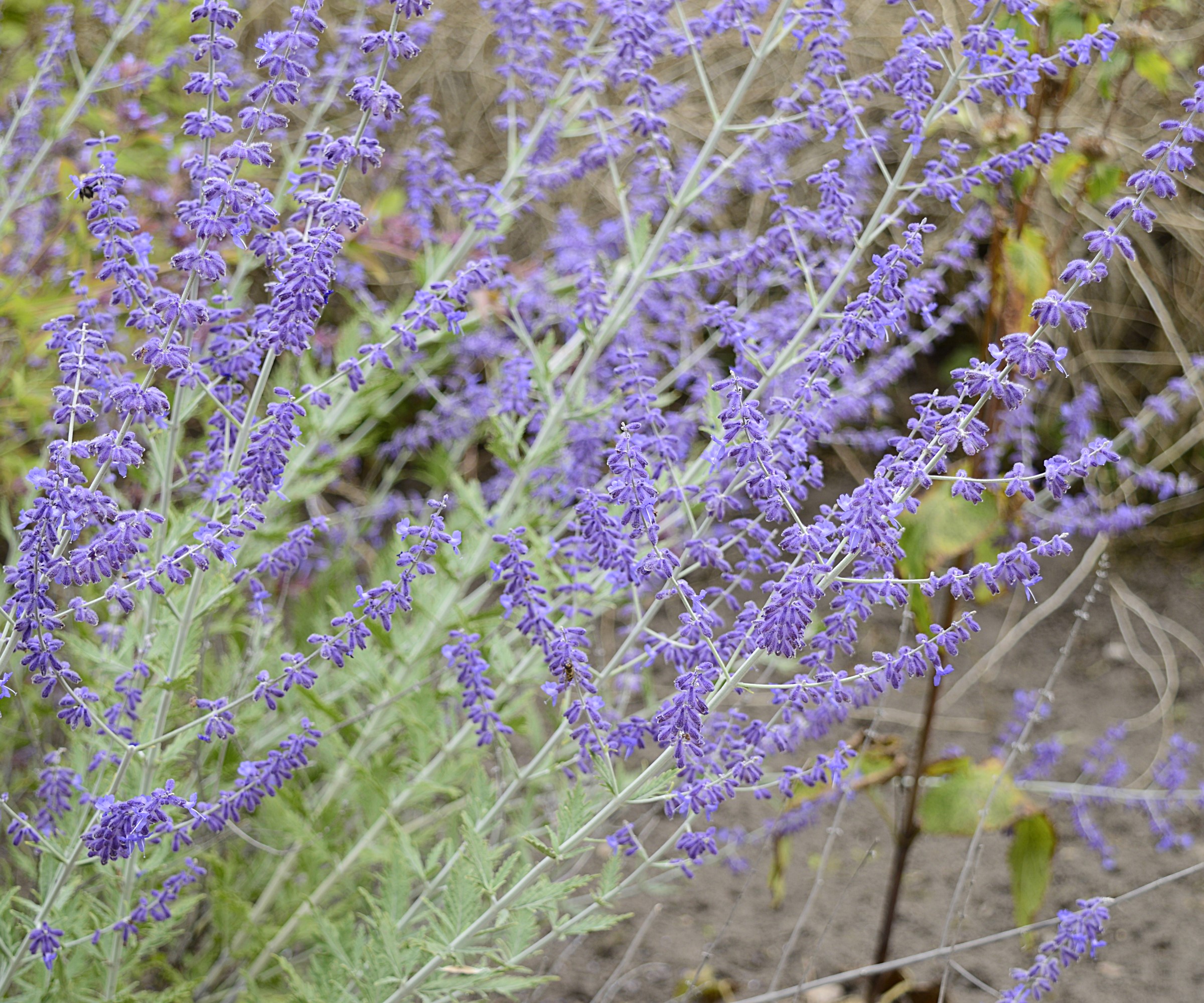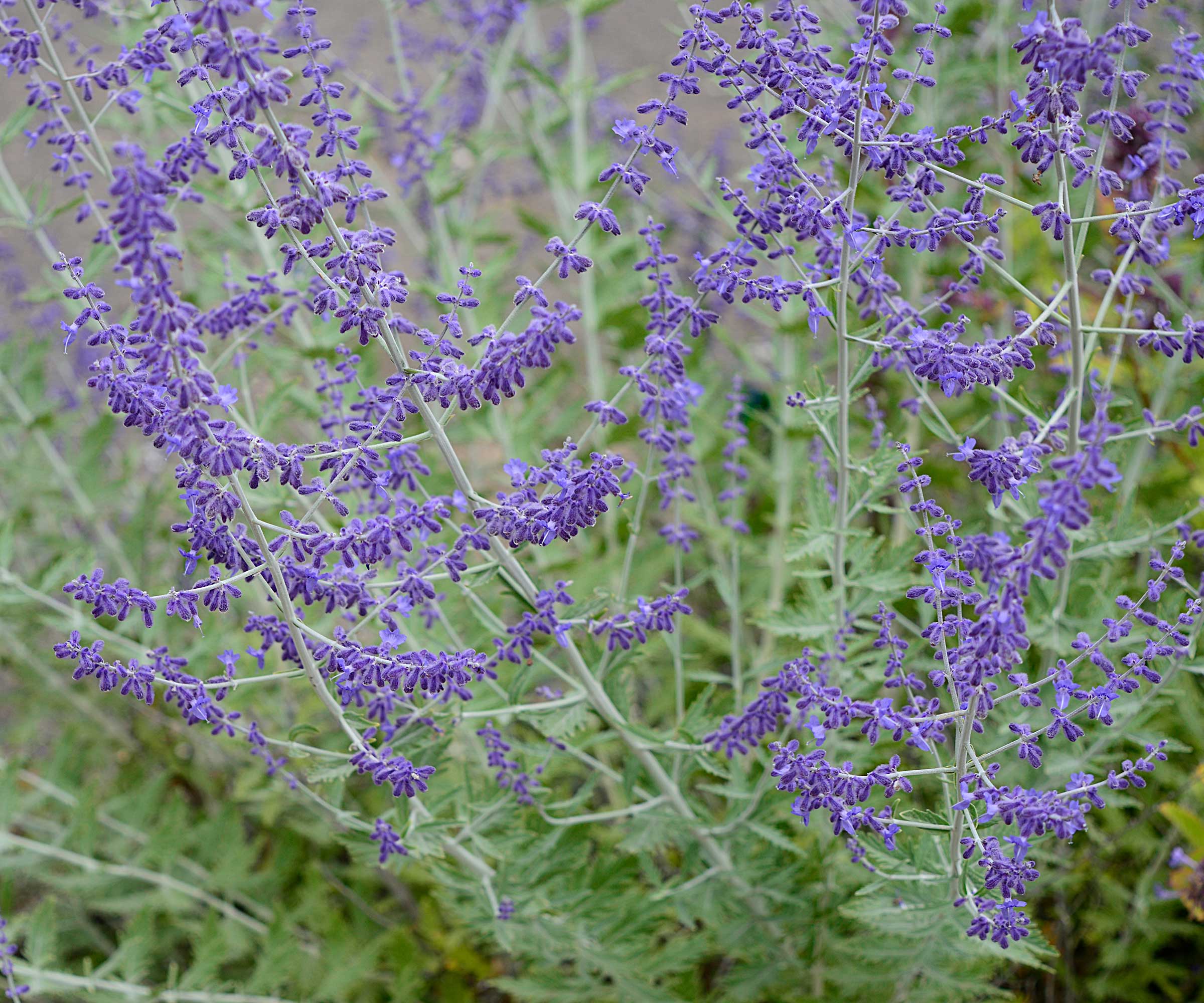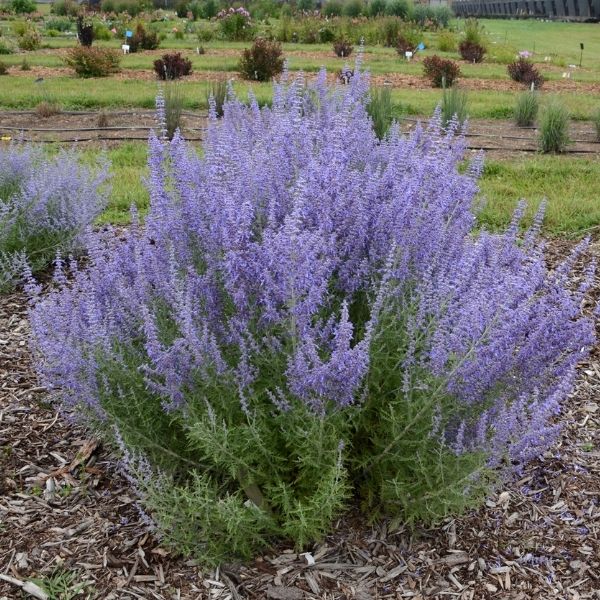How to grow Russian sage – there is lots to love about the beautiful, drought-tolerant, and undemanding perennial
Everything you need to know about growing and maintaining Russian sage


Russian sage (Salvia yangii, formerly known as Perovskia atriplicifolia) is a beautiful perennial that has fragrant silvery-grey foliage and a fantastic display of lavender-blue flowers that are adored by pollinators.
It is a low-maintenance, drought-tolerant, and versatile subshrub that will look great for many months as part of any backyard ideas. What can be better than a glorious perennial that looks stunning, blooms for a long time, requires little maintenance, and is a great plant for pollinators?
Russian sage has featured in several gardens I worked in and I have always admired the beauty and simplicity it brings to a space. As long as you know when to cut back Russian sage, that is the main annual care task to complete once the plant is established.

Russian sage will thrive growing in a sunny border
Is Russian sage easy to grow?
Russian sage is a simple and fuss-free perennial plant. It is a drought-tolerant plant that can thrive in a wide range of soil types and requires minimal care once established as part of your backyard.
It is ideal for flower beds, rock gardens, and Mediterranean gardens and is hardy in US hardiness zones 4-9. As well as being low maintenance, Russian sage is a beautiful addition to any space.
Laura Janney, founder and owner at The Inspired Garden, says: ‘What sets this plant apart is its stunning foliage, which provides a beautiful backdrop for the soft, delicate blooms. These blooms offer a lovely contrast to the more dramatic flowers in the garden.
‘Russian sage is not only a favorite among pollinators but also makes for a striking cut flower. And let's not forget its delightful fragrance, adding another layer of allure to this charming plant.’
Design expertise in your inbox – from inspiring decorating ideas and beautiful celebrity homes to practical gardening advice and shopping round-ups.

A winner of the 2024 Houzz Design award, Laura has over 20 years of experience in gardening and working with clients designing beautiful gardens.
Shop Russian sage varieties
Where to plant Russian sage

Russian sage is a superb plant for pollinators
Plant Russian sage in spring, once the frosts have ended and the soil has warmed up. The best time to plant comes in late spring, though container-grown plants can be planted during summer but will need extra watering to ensure the plants are established. Plants can grow 2-4 feet tall and wide and need to be given enough space to grow.
Russian sage will thrive in a sunny spot. Reese L. Robbins from Just Pure Gardening recommends giving the flowering perennial a full sun position in the backyard where it can get ‘at least six hours of sunlight’ each day. It is not a plant to put in the shade, as the plant may stretch in search of the sun it requires.
‘Well-drained soil is crucial for its health since it doesn’t tolerate soggy or waterlogged conditions,’ adds Reese. ‘It can adapt to poor soils, but avoid heavy, clay soils that hold water.’ Russian sage will thrive in the drier, rockier soil types of gravel gardens or dry gardens, but may flop if planted in very rich and fertile soil.

Reese L. Robbins is the founder of Just Pure Gardening, a site full of fruit and vegetable growing guides, garden ideas, and garden product reviews.
Care and maintenance of Russian sage

Russian sage brings a lovely aromatic fragrance to a space
Russian sage is extremely drought tolerant once established. Keep a close eye on when to water plants and keep them regularly hydrated during the first season to settle it in. When it comes to how to water, it is beneficial to water deeply and less often as opposed to little and often. ‘Make sure the soil dries out between waterings. It will not do well in poor drainage areas or if it continuously gets overwatered,’ says Laura Janney.
‘It needs very little to no fertilizing however if you have poor soil you can use a slow release fertilizer in spring,’ adds Laura. An example of a balanced and slow-release feed that could be used is this Osmocote slow-release plant food, available at Walmart, or you can spread a layer of compost in spring. Avoid overfertilizing plants as they will get leggy and less productive. If you grow your Russian sage in pots as part of a container garden, it will need a regular feed with a liquid fertilizer throughout the growing season.
Deadheading the flower spikes can help to neaten the shrub throughout the blooming season, however, it is not an essential part of growing Russian sage. Cutting back the plant each year will keep the plant compact and blooming at its best. There is a choice for when to cut back Russian sage it can be done either in fall or spring - many growers opt for spring as the dried stems can look great and add interest and texture to a winter garden.
If you want to propagate Russian sage plants, there is various options at your disposal. ‘Russian sage can be propagated through division, cuttings, or seeds. Division is typically done in the spring by digging up the plant and separating the root clumps,’ says Reese L. Robbins. ‘Cuttings can be taken in late spring or early summer from young, healthy shoots. Seeds can also be planted, but they may take longer to establish than division or cuttings.’
Russian sage can overwinter in most US hardiness zones without any issues. In regions with extreme winters, mulching around the roots can protect them from the winter weather. It is important to remove any mulch come spring to boost the drainage around the roots and prevent the plant from sitting in overly wet soil.
FAQs
What is the lifespan of Russian sage?
Russian sage can last for many years if maintained properly. The performance of the perennial may start to decline after around five years, when dividing it is recommended to help rejuvenate an older plant.
Do slugs eat Russian sage?
Slugs are not often a problem when growing Russian sage thanks to the plant’s aromatic foliage. The strong scent of the plant also means it is deer-resistant and not often nibbled by rabbits either.
The silver foliage of Russian sage is one aspect that ensures it makes a striking addition to any backyard. Silver-grey foliage works as a great contrast against brighter pops of color in any flower bed and the likes of dianthus, senecio, and lamb’s ear are also fantastic plants with silver foliage that can be used to bring such beautiful shades to a yard.

Drew has worked as a writer since 2008 and was also a professional gardener for many years. As a trained horticulturist, he worked in prestigious historic gardens, including Hanbury Hall and the world-famous Hidcote Manor Garden. He also spent time as a specialist kitchen gardener at Soho Farmhouse and Netherby Hall, where he grew vegetables, fruit, herbs, and cut flowers for restaurants. Drew has written for numerous print and online publications and is an allotment holder and garden blogger. He is shortlisted for the Digital Gardening Writer of the Year at the 2025 Garden Media Guild Awards.


